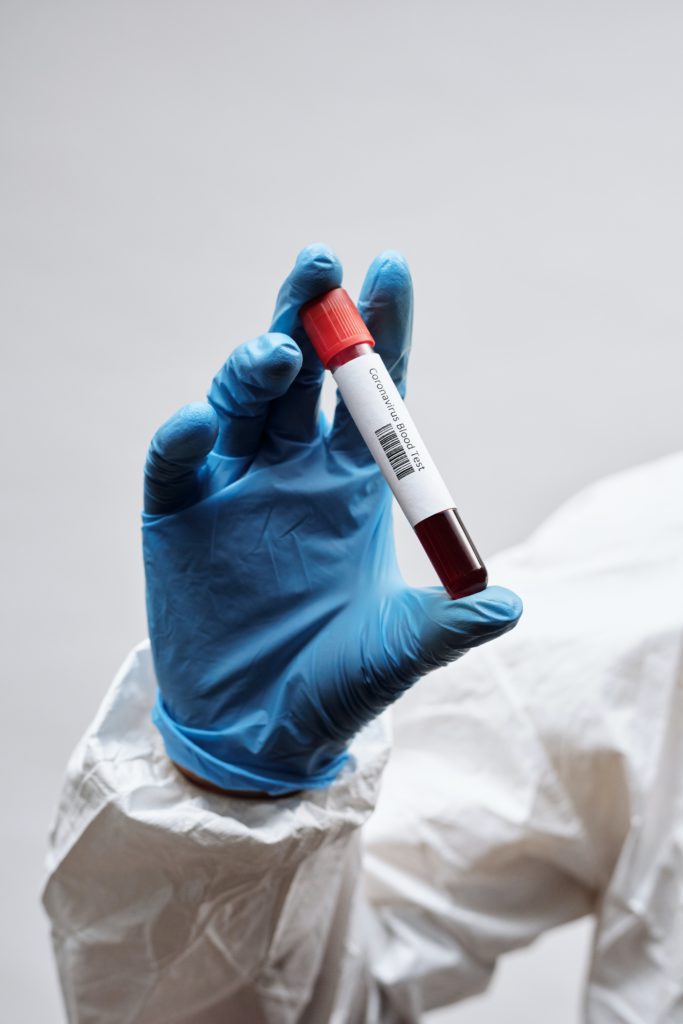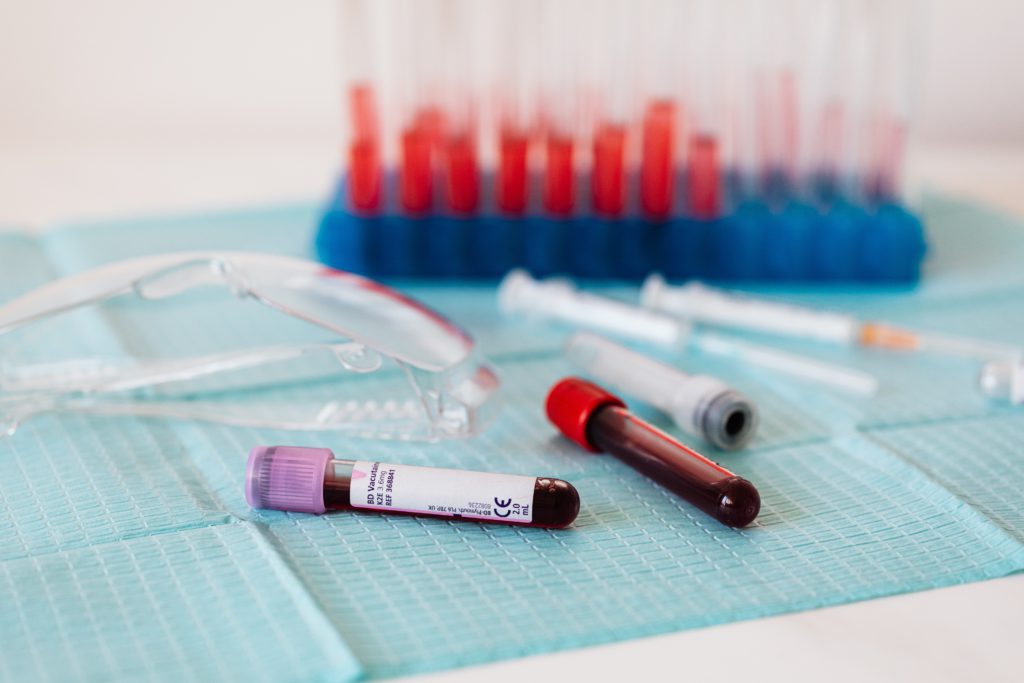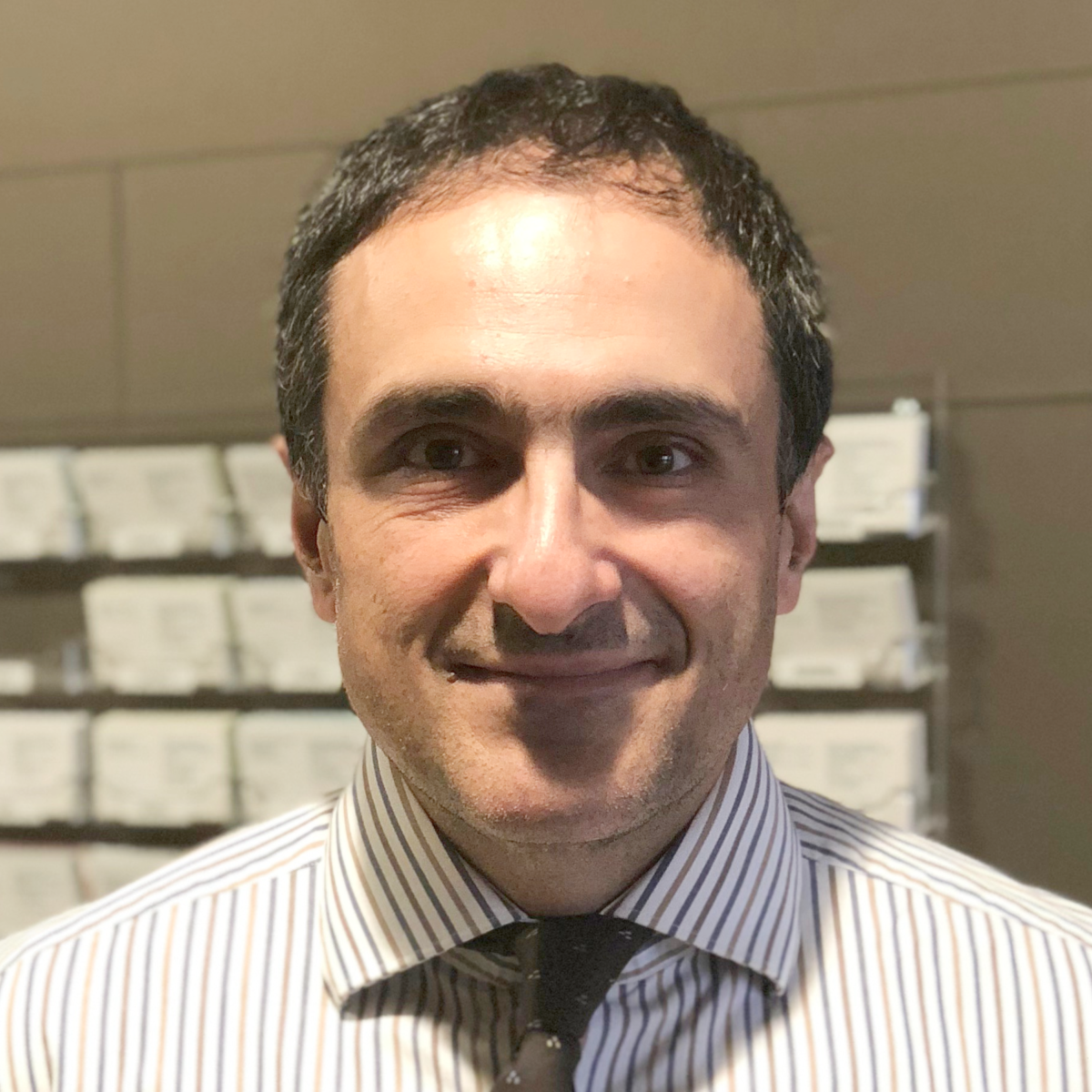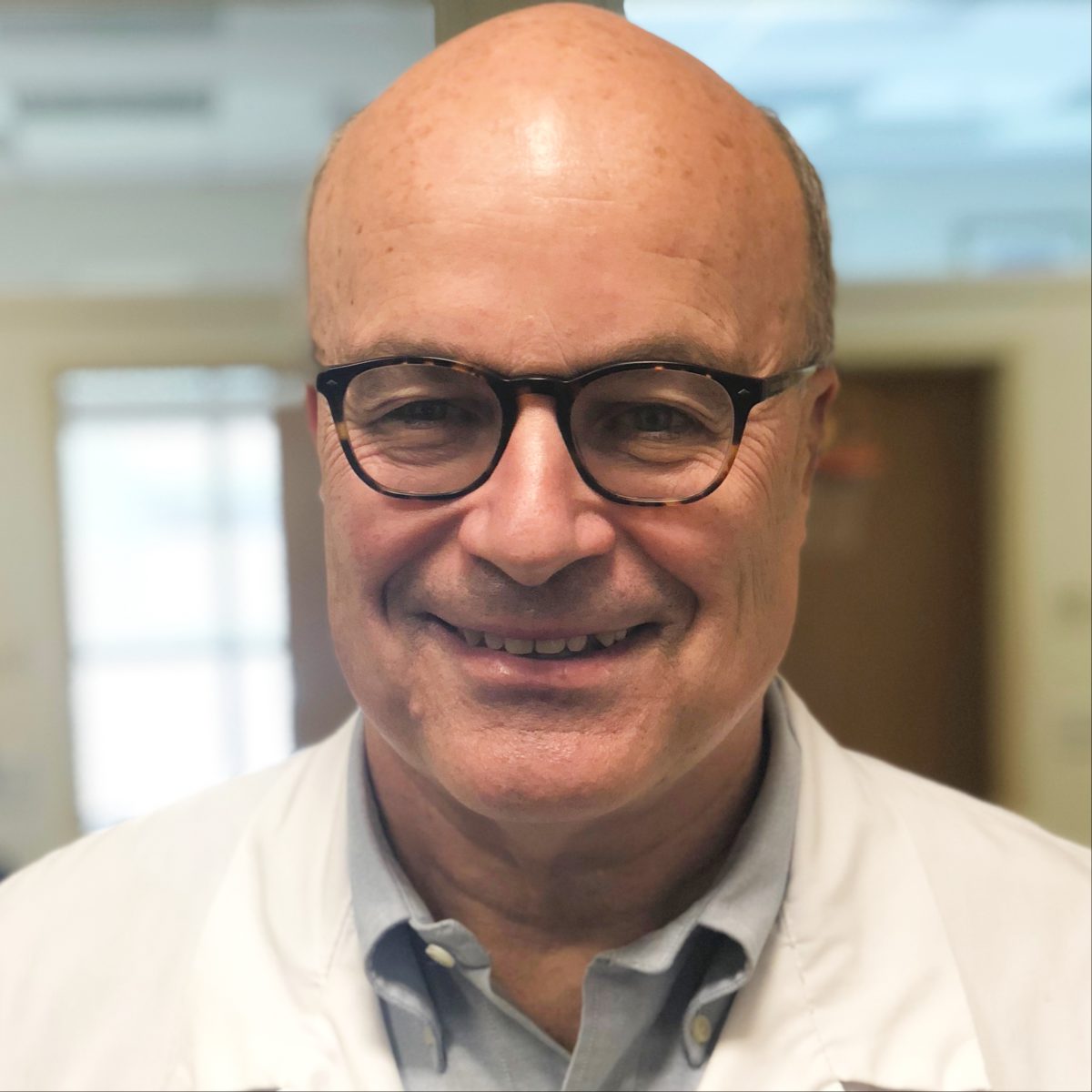Treatments for Acute Myeloid Leukemia (AML) and Myelodysplastic Syndromes (MDS)
Daniel Pollyea, MD, MS
The horizon of potential treatments undergoing research for blood diseases like acute myeloid leukemia (AML) and myelodysplastic syndromes (MDS) is ever-expanding. However, there is a long way to go to change the current standard of care and practice.
Dr. Daniel Pollyea is the Clinical Director of Leukemia Services and associate professor in the Division of Hematology at the University of Colorado Hospital. Below, he guides us through current clinical trial prospects and discussion highlights on AML and MDS drugs from the recently concluded American Society of Hematology (ASH) Annual Meeting and Exposition.
- What is myelodysplastic syndrome (MDS)?
- Common symptoms of MDS
- MDS scoring system
- What are the variables that are used to calculate the score and stage the MDS?
- What's the general ratio of people being diagnosed with early MDS, advanced MDS or a full-blown AML?
- Is there a treatment necessity for patients diagnosed with low-risk MDS?
- What risk factors play an important role in progression from low-risk to high-risk MDS?
- If a patient is diagnosed with early MDS, how is the disease progression monitored?
- What kind of red flags should one consider to get themselves examined for probable MDS?
- What kind of red flags should one consider in the case of advanced MDS or AML?
- What kind of symptoms do patients with AML or relapsed AML present?
- Diagnostic Procedures
- MDS and AML Treatments
- AML Treatments
- What type of clinical research is ongoing to improve the current standard of care for AML?
- In terms of treatment approaches, what type of candidates are eligible for intensive induction chemotherapy and transplants?
- Apart from the treatment combinations you mentioned above, are there any forms of sequential treatment?
- ASH Highlights
- What's your message to people about the landscape of treatments for MDS and AML?
- What type of advancements in treatment and management will we see in 2022?
- What are your personal views on these ongoing clinical trials?
Introduction
Dr. Daniel Pollyea is the clinical director of leukemia services and an associate professor in the Division of Hematology at the University of Colorado Hospital. Dr. Daniel Pollyea is an expert in the management and treatment of blood cancer-related diseases and shares his thoughts on the current treatment and latest development for the treatment of myelodysplastic syndromes (MDS) and acute myeloid leukemia (AML).

What is myelodysplastic syndrome (MDS)?
Myelodysplastic syndromes are a rare type of bone marrow-related disease. It is very uncommon, and we don’t see much information about this in the public as we do for other types of cancers, such as lung and colon cancer.
Since there is not a lot of information, being diagnosed with one can make it really scary. However, it usually alleviates once the patient has a better understanding of this disease, including the prognosis and the treatment.
MDS is a type of cancer that affects the bone marrow. Since bone marrow is the organ that makes all the blood cells, having cancer in that space can cause problems with the production of blood cells.
Common symptoms of MDS
- Decrease in red blood cell count
- Anemia
- Tired
- Fatigued
- Shortness of breath
- Decrease in number of platelets
- Bleeding complications
- Decrease in white blood cells
- Higher risk of infectious complications
This can lead to a decreased number of red blood cells, leading to anemia and making people tired, fatigued and short of breath. People also have a decreased number of platelets, making them more likely to have bleeding complications.
MDS also leads to decreased numbers of white blood cells, making people more prone to infectious complications. However, MDS is a disease that exists on a spectrum.
Myelodysplastic syndrome exists on a spectrum. On one end, it’s an extremely mild, indolent, non-aggressive disease that sometimes doesn’t even need to be treated. On the other end, it can be very aggressive and may progress to acute myeloid leukemia.
MDS scoring system
On diagnosis, it’s really important to understand where on that spectrum you are, because it has huge implications on the prognosis and treatment regimen. To understand the spectrum of the diseases better, oncologists use a scoring system.
In this system, we take a bunch of different variables present and run them through a calculator to get a score. This allows us to categorize the patients from high risk all the way down to low risk.
On the other hand, from a practical standpoint, MDS has many different subtypes as proposed by the World Health Organization. It is really important from the treatment perspective. That’s important to oncologists, as it helps us understand and treat the disease better. These subtypes are things the patient can ask about.
However, what is important is where you fall on this risk calculator score, and that’s called the IPSS (International Prognostic Scoring System). This is the information that a person needs to know to get started with the disease, its prognosis and its treatment.
It’s really important when you’re diagnosed to understand where on that spectrum you are, because that will have huge implications for the prognosis and for treatment.
What are the variables that are used to calculate the score and stage the MDS?
The risk scoring system is pretty simple. We take into consideration clinical variables, such as the percentage of immature cells in the bone marrow called blasts, the chromosomes, and chromosomal abnormalities associated with the disease. We also consider how low the blood counts are, in addition to accounting for the levels of hemoglobin, platelets and neutrophils (a type of white blood cell).
At the moment, these are the only variables we consider. However, it is going to be changed soon based on some data presented at the American Society of Hematology (ASH). This will help us get more granular information, helping us better prognosticate patients when they’re diagnosed.

What’s the general ratio of people being diagnosed with early MDS, advanced MDS or a full-blown AML?
The diagnosis depends on many things. Some people get picked up with MDS just because of a routine visit to the primary care doctor with mild anemia, and if the primary care doctor is aggressive, then he would suggest some tests to find out the root cause — thereby diagnosing MDS.
On the other hand, several people don’t usually follow up with their health, and thereby missing such indications and being diagnosed as an advanced MDS case. So it’s actually a pretty hard question to answer. However, a majority of people are diagnosed with lower-risk MDS, and only some percentage of these people evolve to higher-risk MDS. It really depends on where you’re practicing.
From my perspective at an academic institution, which is the referral center, we have more cases of higher-risk patients because that’s who gets referred. But in a community setting, it’s probably more likely to be seeing the lower-risk patients. It is really difficult to have accurate numbers for that question.
Statistically, approximately 20,000 cases of MDS are diagnosed in the United States per year. This number is far lower than the actual cases because a lot of people who are living with sort of benign, asymptomatic, low-risk MDS are just never diagnosed.
Is there a treatment necessity for patients diagnosed with low-risk MDS?
Unlike other cancer types such as lung cancer or colon cancer — where if it’s present, it must be acted upon — MDS is different. If it is at a low-risk early stage, it doesn’t need to be treated in many cases. The rules of other cancers don’t necessarily apply to MDS in that way.
What risk factors play an important role in progression from low-risk to high-risk MDS?
MDS usually occurs in older people with ages above their 60s. Apart from this, there aren’t really any other sort of demographics. However, it is reported to be more common in males than females.
There are no other subgroups that are more likely to get this. We don’t understand why this happens when it happens. There really aren’t risk factors. It is also not typically hereditary, so that’s a challenge.
If a patient is diagnosed with early MDS, how is the disease progression monitored?
For a patient diagnosed with early MDS, we do blood work every 3 months. We consider the number trends of red blood cells, white blood cells and platelets. However, the actual diagnosis requires a bone marrow biopsy. Sometimes, the biopsy is repeated in the future if there is a concern for progression.
What kind of red flags should one consider to get themselves examined for probable MDS?
The symptoms can be very different. However, at diagnosis, patients typically complain of fatigue that’s related to anemia. If the anemia is significant, it could also lead to shortness of breath — particularly exertion, or dizziness and lightheadedness in extreme cases.
However, some patients can be completely asymptomatic and are usually diagnosed during their routine blood work.
It is uncommon to have complications like bleeding due to low platelets, but that still can happen. Another sign to look for is recurrent infections that a person can’t clear. On some occasions, it can be MDS.
Nevertheless, all these symptoms could be caused by many other medical conditions. Just having any of those things certainly doesn’t guarantee that a person is going to have MDS.
What kind of red flags should one consider in the case of advanced MDS or AML?
When MDS progresses to AML, the patient is often symptomatic, usually worsening anemia and associated symptoms.
The reason we frequently monitor these patients every 3 months is to catch the progression of early MDS to advanced MDS or AML before it’s too late.
In such advanced cases, bleeding complications or chronic infections are more common than at the initial diagnosis of MDS.

What kind of symptoms do patients with AML or relapsed AML present?
Symptoms are, again, very nonspecific: progression of fatigue, shortness of breath, dizziness, lightheadedness, occasional bleeding or infectious complications. There can also be common symptoms like a rash, usually called the petechial rash, which is due to low platelet counts.
Diagnostic Procedures
What type of diagnostic tests and questions are to be asked while testing for MDS?
It’s really important to have appropriate diagnostic testing, because these tests are used to make predictions about outcomes and treatment decisions.
Since this is a rare disease in the community, it is better to have an expert who looks at MDS all day than someone who might encounter a case or two in a month or a year.
In general, the essential element of testing would be having an experienced hematopathologist who specializes in this disease look at the bone marrow biopsy sample. We also need to do chromosomal testing for the risk stratification model (the IPSS model) to make treatment decisions.
In addition, extensive genomic testing is also essential to look for the presence of one or more of the mutations that we know can exist in MDS. Increasingly, this is relevant for treatment decisions, and it will soon be incorporated into the standard IPSS model.
MDS and AML Treatments
What is the current standard of care for MDS?
The first decision to make is whether to treat or not treat MDS. Low-risk MDS patients who are essentially asymptomatic and do not need transfusions are just to be followed up with routine blood work. However, on the other hand, patients with high-risk MDS and the one who presents with the symptomatic disease must be treated. Usually, it is when a person needs transfusion support.
Currently, the landscape is pretty limited in terms of treatment, and most of them would get a hypomethylation agent. There are two of them that are approved by the FDA, azacitidine and decitabine, and both are essentially equivalent.
They are intermittent treatments given for 5 to 7 days a month and then just repeated every month. They are given either by IV, or azacitidine can also be given subcutaneously.
Decitabine has an oral formulation, so you take it as a pill. For the majority of patients, a pill is recommended due to patient comfort. In addition, recent data have also shown that the pill is equivalent to the IV route. Taking a pill would also decrease the overall cost of healthcare, as there would be fewer inpatients.

There are some subtypes of MDS that have their own specialized treatments. For example, MDS with 5q chromosomal deletion is treated with lenalidomide. Another subtype that has an SF3B1 gene mutation is treated with a drug called luspatercept, recently approved by the FDA.
Apart from treating the disease, we can sometimes boost the patient’s blood counts by using erythroid-stimulating agents or erythropoietin-stimulating agents and these are FDA approved as well. These drugs don’t treat the disease per se. They promote your bone marrow to produce more red blood cells. That’s kind of the landscape as it is right now for MDS treatments.
AML Treatments
What is the current standard of care for AML?
AML is quite different from MDS with respect to treatment options. There are lots of different caveats in AML. One of the first considerations to make is if a patient is a candidate for intensive induction chemotherapy. If they are, we would typically go in that direction.
We use a 7+3 regimen. It is called 7+3 because cytarabine is infused for 7 days, and 3 days later a drug from a class called an anthracycline is administered. It’s a very intensive chemotherapy regimen.
There are also a few other drugs that can be given in combination with 7+3, depending on the patient’s disease biology. For example, if the patient has FLT3 mutation, we add an FLT3 inhibitor called midostaurin. If a patient has a chromosomal abnormality, we add gemtuzimab to the 7+3 regimen.
That’s the current landscape for patients who are candidates for intensive induction chemotherapy. However, for the patients who are not a candidate for that therapy, a combination of venetoclax plus azacitidine is preferred, and it’s the standard care for that population.
Other FDA-approved options are glasdegib and ivosidenib for an IDH1 mutation. However, most patients are treated with venetoclax plus azacitidine as the first-line therapy.

When patients relapse, the landscape is different. We first investigate what type of mutation this relapsed AML presents and whether we can exploit it with targeted therapy. For example, for patients with FLT3 mutation in the relapsed setting, an FLT3 inhibitor, gilteritinib, is given. If the patient presents with IDH1 mutation in the relapsed setting, they are treated with IDH1 inhibitors. Some patients also receive a stem cell transplant if that increases their chances of survival. There’s a lot that goes into that decision-making.
There is also a new therapy of oral azacitidine approved specifically as maintenance therapy. It is prescribed once the patient enters remission from intensive chemotherapy.
What type of clinical research is ongoing to improve the current standard of care for AML?
Venetoclax combinations
A combination of venetoclax is used for candidates that are not suitable to receive intensive induction chemotherapy. There are trials looking at adding more treatments in the upfront setting, but these are early trials that should not be followed in standard practice. I’d say it’s very early on in the progress for this, and it’s by no means certain that this is the future.
Magrolimab and gilteritinib and their combinations
Gilteritinib is an FLT3 inhibitor used in relapsed AML for FLT3 positive mutation.
For intensive chemotherapy patients, there is some research going on that when gilteritinib is combined with intensive chemotherapy, it gives a better outcome than intensive chemotherapy alone. However, we still have to wait for the official study details before we can incorporate them.
Adding gilteritinib to venetoclax and azacitidine was also discussed at the recent ASH meeting. However, again, very early to speculate.
Speaking of magrolimab — it targets CD47 and is not FDA-approved therapy at this time. However, there is a lot of enthusiasm for magrolimab, as it can target a very specific subtype of AML with CD47 mutation. There is also a clinical trial looking at magrolimab, venetoclax and azacitidine in both newly diagnosed and relapsed AML patients, but it is very early to conclude how that combination would work.
MORE: Read more on FDA approvals of clinical trials
What are the treatment advances for a first-line, relapsed or refractory AML. How is the research progressing compared to other cancers like myeloma?
There is no consensus on this question, and I think there can be firm opinions or ideas on both sides. There are doctors who think that AML is going to be like myeloma, and they throw many treatments in the upfront setting. I respectfully disagree because that’s not the right strategy.
AML is a very different disease, and I’m more optimistic about more sequential-type treatments. I think when they are given a lot of treatments, it only leads to prohibitive toxicity. But at this point, it is just an opinion. We don’t know the answer and are working hard to find that out. Some of these clinical trials will hopefully answer that.
In terms of treatment approaches, what type of candidates are eligible for intensive induction chemotherapy and transplants?
Paradoxically, the criteria is a certain age cutoff for intensive chemotherapy. However, not always. It’s a very controversial thing.
I think most oncologists make subjective decisions based on the patient assessment and their performance status, etc. But there are efforts to make this more objective, and I think those efforts are also a bit controversial.
Of note, in the past, when we didn’t have any effective treatments for people who were not the candidates for intensive chemotherapy, then it was a very important decision because essentially you were asking whether a patient could be a candidate for effective therapy or not.
Nowadays, we have effective therapies for people who aren’t candidates for intensive induction chemotherapy. We’re starting to ask the question that even if the patient is a candidate for intensive induction chemotherapy, should they be put on one? Or are there better and more well-tolerated therapy that might work just as well, if not better? We’re really at an inflection point in this question, and there is no consensus right now on how to make that assessment.

I should also mention that when deciding whether the patient is a candidate for intensive chemotherapy or not and also whether the patient is a candidate for a transplant, that is incorrect. The patient can be a perfectly reasonable candidate for a transplant, which can cure AML, but not a good candidate for intensive chemotherapy. Those two things don’t go together.
If the patient enters remission by one or the other means because they weren’t a candidate for intensive chemotherapy, we should still consider a transplant if appropriate.
I think many people continue to say, “If you couldn’t get intensive chemotherapy, you can’t get a transplant.” That’s really not true. If a patient hears that, they should seek another opinion.
Apart from the treatment combinations you mentioned above, are there any forms of sequential treatment?
Yes, a sequential treatment is what we opt for usually. For example, if the patient has an IDH mutation, progress on venetoclax plus azacitidine, and then incorporate an IDH inhibitor. I think a good clinical trial would be to add in an IDH inhibitor for a patient who has a residual disease after some time point or for 3 inhibitors.
In practice, we do not combine and give 3 drugs together because we don’t know the toxicity profile. Outside of a clinical trial, there’s no real role for just throwing a bunch of treatments at somebody when we don’t know how they’ll interact or if it’ll help them.
Venetoclax and CPX-351
CPX-351 is a formulation of intensive chemotherapy that’s given to people with secondary AML, AML from a previous MDS or a treatment-related AML. It’s superior to 7+3 in that population.
CPX-351 is not a substitute. It is an intensive therapy, but that does not mean that if the patient is not a candidate for an intensive chemotherapy regimen. they can’t get CPX-351.
It should also be mentioned that there were a couple of presentations at ASH. However, these studies compared retrospective outcomes from patients who got venetoclax to those who got CPX-351. These showed equal outcomes.
But the studies were pretty flawed in that the patients who got CPX-351 were much younger than the patients who got venetoclax, so they were not comparable. Saying there’s no survival difference between two groups of patients after having a very different baseline is not fair.
However, conducting a prospective study of these two therapies would be beneficial. Realistically, at the moment, a venetoclax patient is someone who’s really not a candidate for CPX-351.
ASH Highlights
Gilteritinib and azacitidine
Gilteritinib plus azacitidine versus azacitidine alone was a phase 3 study considering a patient population unfit for induction chemotherapy. This was mostly older AML patients, and it was revealed that there was no survival benefit when you compared these to different groups.
Realistically, even if it had been a positive study, it would not have answered the question that we all need to know: which one is better than venetoclax + azacitidine? Because that’s the standard of care right now.
It’s maybe disappointing to see that this wasn’t a positive study for FLT3-positive patients, but it wouldn’t have answered the question that is actually relevant right now.
Nevertheless, the combination seemed to be well tolerated with a reasonable side effect profile, but it didn’t translate into better survival. I don’t think there is much future for this now that venetoclax + azacitidine is so entrenched in the treatment right now.
If you wanted to make an impact and show that this is a better therapy, you’d have to go up against that, and it’s not easy standing alone.
Pevonedistat and azacitidine
Pevonedistat and azacitidine is the first-line therapy for most MDS cases, and the primary endpoint was event-free survival. This combination had a lot of enthusiasm because new treatments are sorely needed in MDS.
However, unfortunately, this study did not return any positive results. More intriguingly, good responses were recorded in the pevonedistat arm but didn’t translate into impacting the primary endpoint.
In conclusion, pevonedistat in combination with azacitidine did not prove to be a good combination, and there might be other ways for it to be evaluated.
Ivosidenib and azacitidine
IDH1 patients were eligible to receive ivosidenib plus azacitidine versus azacitidine alone. These patients are the ones who are not candidates for induction chemotherapy.
The steering committee decided to stop the trial early because an early assessment revealed that the outcomes were so much better in the ivosidenib arm that it was no longer ethical to continue running the placebo arm.
I always like to hear that there was a benefit with respect to survival. However, for oncologists like me, it doesn’t change our practice because the standard of care is venetoclax plus azacitidine.
In order to change this standard practice, a trial comparing venetoclax plus azacitidine versus ivosidenib plus azacitidine with respect to survival or responses must give better survival outcomes. But it’s not really a fair comparison, as that is going to be a really hard study to do.
I would anticipate that this would be approved, but there are other drugs in AML that are approved but aren’t used very much.

The choice of combination is based on toxicity or other considerations. It’s an oral regimen. Ivosidenib, being an oral medication, doesn’t require an inpatient stay like venetoclax. Ivosidenib may provide better outcomes, but again, the control arm was not the standard of care that we use in this country.
This is because even though venetoclax has its downsides — it can be mildly suppressive and needs to be managed — ivosidenib doesn’t have those issues. It can cause differentiation syndrome, which is something you have to keep a really close eye on. Each of them has its nuances, I would say. However, the outcome with venetoclax is mostly positive.
What’s your message to people about the landscape of treatments for MDS and AML?
For now, there is a lot of progress recently in the AML field recently, and we are really excited about it. On the other hand, MDS is really poised for the same revolution that started with AML just 5 or 6 years ago.
I think there are many promising phase 3 studies that we hope to have some results on, and I really think these studies are really going to move the needle with respect to MDS.
Nevertheless, either way, we are just getting to understand these diseases much better. We will definitely have more treatment options in the near future, and we are all optimistic about it.
What type of advancements in treatment and management will we see in 2022?
Right now, we are really trying to figure out how to treat patients with relapsed AML who relapse after venetoclax. I think there are some specific strategies for patients who are not responsive at all to venetoclax, and right now that is a big unmet need.
In MDS, we’re going to wait and hear about whether venetoclax can improve outcomes there and whether magrolimab can improve outcomes. Those are just a few of the things that I’m excited about.
What are your personal views on these ongoing clinical trials?
All these studies are very fascinating from a scientific perspective in order to try and understand how these diseases work. I really like doing that, as understanding the disease better would help us treat them better.
However, on a personal level, in the clinic, seeing patients who have overcome so much and are incredibly strong and courageous is really something. In addition, helping them through such difficult times in their life is something that I enjoy. Being at the intersection of research and clinical care and helping people to get through a very challenging time is appealing to me.
Other Oncology Experts
Dr. Christopher Weight, M.D.
Role: Center Director Urologic Oncology
Focus: Urological oncology, including kidney, prostate, bladder cancers
Provider: Cleveland Clinic
...
Doug Blayney, MD
Oncologist: Specializing in breast cancer | HER2, Estrogen+, Triple Negative, Lumpectomy vs. Mastectomy
Experience: 30+ years
Institution: Stanford Medical
...
Dr. Kenneth Biehl, M.D.
Role: Radiation oncologist
Focus: Specializing in radiation therapy treatment for all cancers | Brachytherapy, External Beam Radiation Treatment, IMRT
Provider: Salinas Valley Memorial Health
...
James Berenson, MD
Oncologist: Specializing in myeloma and other blood and bone disorders
Experience: 35+ years
Institution: Berenson Cancer Center
...





